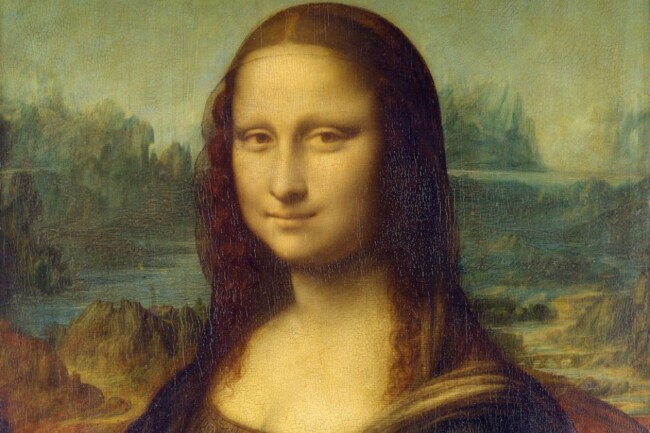Sometimes a girl needs to let her hair down and take to the open road, even if that girl is 459 years old. While everyone is hitting the road to the shore this summer, one of the most famous women in the world took to the New Jersey Turnpike when she visited the US, because in 1963, the Mona Lisa took to the turnpike. Yet, she wasn’t the only famous woman traveling that day, because the Mona Lisa also passed Whistler’s Mother, both traveling the Turnpike that day. Read on to learn more about the Mona Lisa’s U.S. road trip.
About the Mona Lisa’s Trip
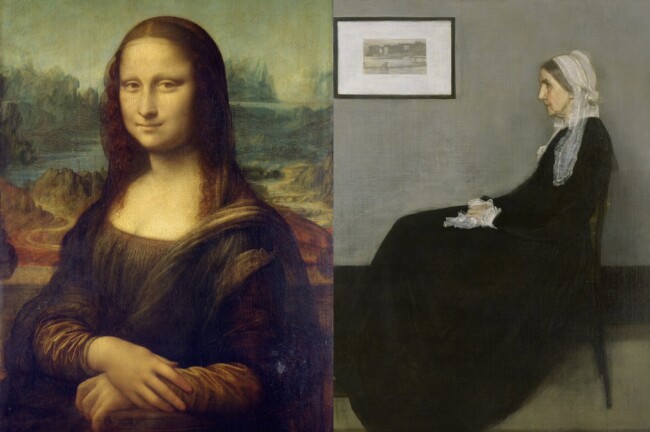
^ Mona Lisa + Whistler’s Mother (Photo credit: Public Domain)
Sixty years ago, none other than the Mona Lisa smirked down the turnpike from New York to Washington, D.C., and back again when she visited the United States in 1963. The entire trip was the brainchild of First Lady Jacqueline Kennedy.
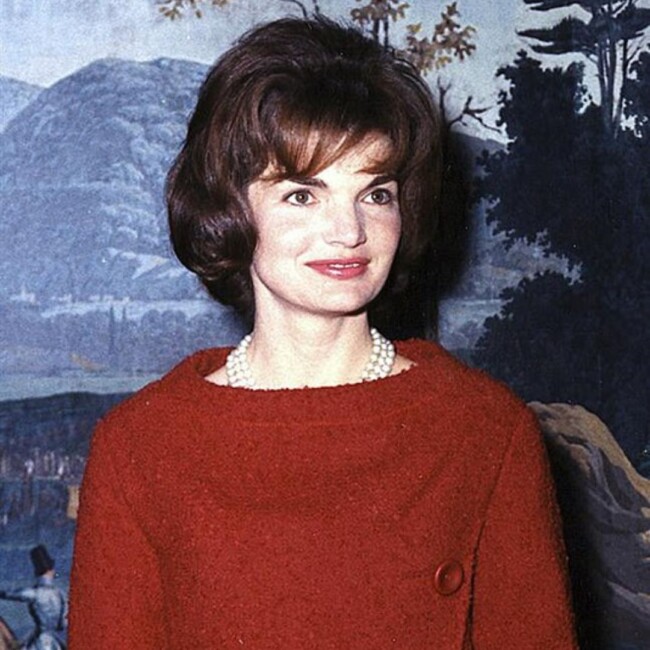
^ Jacqueline Kennedy (Photo credit: Public Domain)
A Francophile, Jackie had earned a Bachelor of Arts in French Literature from George Washington University, and even studied abroad at the famous Sorbonne University in Paris. While some in the US criticized Jackie’s penchant for French culture, art, and fashion, her fluency in French was a boon to President John F. Kennedy, who sought to repair the fraying relationship between France and the United States following WWII. During the Kennedy’s highly publicized trip to France in 1961, Jackie befriended André Malraux, the French minister for cultural affairs. Eventually, she asked André if the Mona Lisa could be exhibited in the United States.
Read More: These 4 Hobokenites Are Featured at the MoMA
While such loans are commonplace today, at the time, loaning a priceless artifact was considered unthinkable. Firstly, the Mona Lisa was painted on poplar wood rather than canvas, making the painting extremely brittle and difficult to transport. Secondly, the Mona Lisa had been firmly installed at the Louvre museum since 1804, but had a checkered past whenever it was removed.
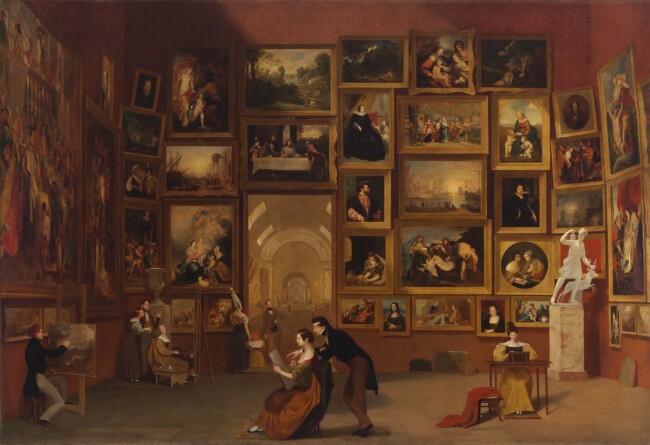
^ Painting by Samuel Morse showing how the Mona Lisa looked installed in 1833 (Photo Credit: Public Domain)
It had been removed and damaged both in WWI and WWII, along with the Franco-Prussian War when it spent time in a military arsenal. Most alarmingly, it had been stolen in 1911 — the only painting ever to have been stolen from the Louvre. The thief, an Italian painter named Vincenzo Peruggia, was soon apprehended, but not before a young Pablo Picasso was brought in for questioning by the police as a primary suspect. In 1956, one person threw acid at the painting while another lobbed a rock at her.
With such a rocky past, it’s little wonder that news of the Mona Lisa’s loan to the United States caused a shockwave across France. A group of Louvre curators threatened to resign, while the newspaper Le Figaro ran an editorial asking the American people to refuse the painting. Many citizens gathered to participate in France’s national pastime, protest — sparking what became known as the “Mona Lisa Riots” in 1963.
Despite the outcry, Lady Lisa left the Louvre in the dead of the night, traveling by motorcade from Paris to the port city of la Havre. There, she boarded the SS France, where she traveled in her own State Room. Even had she been thrown overboard, her airtight, specially designed box would have saved the Mona Lisa from the ravages of the ocean.
On December 19th 1962, the SS France arrived in New York Harbor carrying over 1,000 people and the world’s most famous painting. She immediately boarded an armored truck and was escorted by police down the NJ Turnpike to the National Gallery in Washington, D.C.
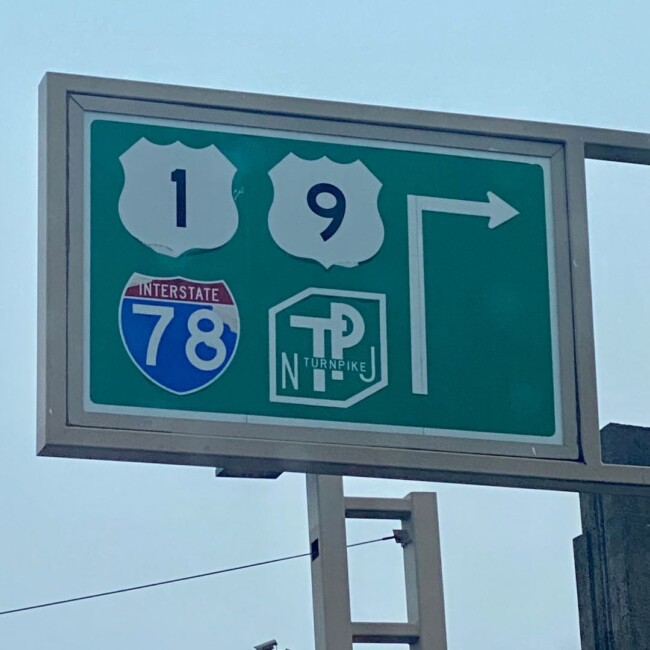
Over half a million people came to see the Mona Lisa at the National Gallery, but that paled in comparison to her New York debut.
Returning to New York by a Secret Service entourage, the Mona Lisa took the NJ Turnpike northbound, just as another art entourage was carrying Whistler’s Mother by James Whistler southbound on the turnpike to be displayed in Atlanta’s High Museum of Art also loaned by the Louvre.
The New York Times wrote on February 11th, 1963: “One of the great moments of history took place the other day when the Mona Lisa passed Whistler’s Mother on the Jersey Turnpike…Art has now become an instrument of the new diplomacy.”
The New York Times article also pointed to a new trend in politics: art had become diplomacy. A year later, in 1964, Michelangelo’s Pietà was loaned to New York’s World’s Fair — traveling by nuclear submarine.
The Mona Lisa arrived at the MET in a frenzy of what was described as “Mona-Mania!” Hung in the Medieval Sculpture Room, over 1/4 of a million people saw the painting in its first week. By the end of its MET run from February 7th to March 4th, over 1 million people had come to view the portrait, shattering the MET’s attendance record.
The Sprinkler Incident
Yet, her time at the MET was not without incident. One morning, the former director of the MET, Thomas Hoving, arrived to work only to discover that a sprinkler head had malfunctioned overnight, drenching the painting beneath a gentle rain for several hours. Fortunately, the thick, glass covering acted like a raincoat, saving the portrait, and the deluge was never mentioned to the public.
Three days following the conclusion of the MET exhibit, the Mona Lisa was placed in her traveling case, transferred to an unmarked van accompanied by Secret Service agents, and chauffeured to Pier 86, where she boarded an ocean liner, the SS United States. Fittingly, she concluded her oceanic passage in a luxury cabin. By March 12th, the Mona Lisa was back in France and at the Louvre. She would only leave the Louvre once more, in 1974, when she was loaned to Tokyo and Moscow.
See More: A Look Inside the Montclair Art Museum + Everything It Has to Offer
As for her time passing the Jersey Shore, being tight-lipped, the Mona Lisa never mentioned which shore town she preferred.
More Information about the Mona Lisa’s trip to the US can be found on The Bowery Boys Podcast, #405: Mona Lisa at the Metropolitan Museum of Art.

